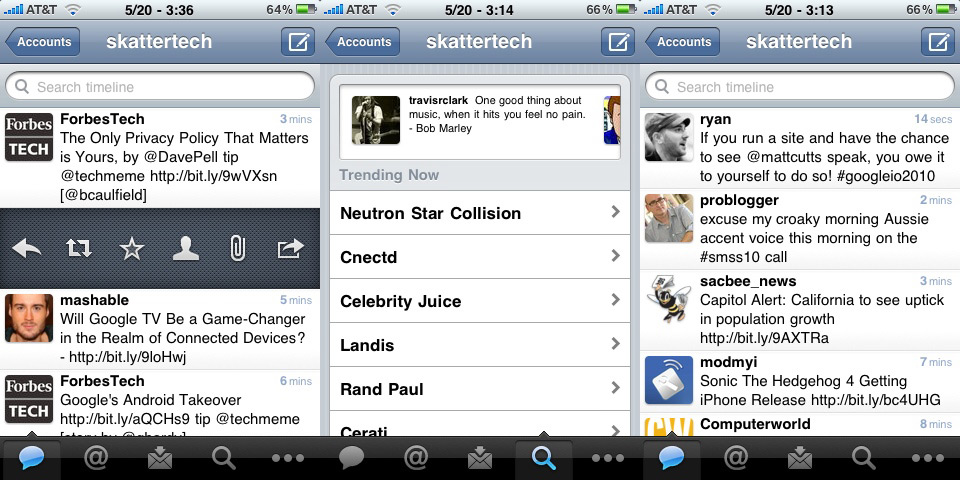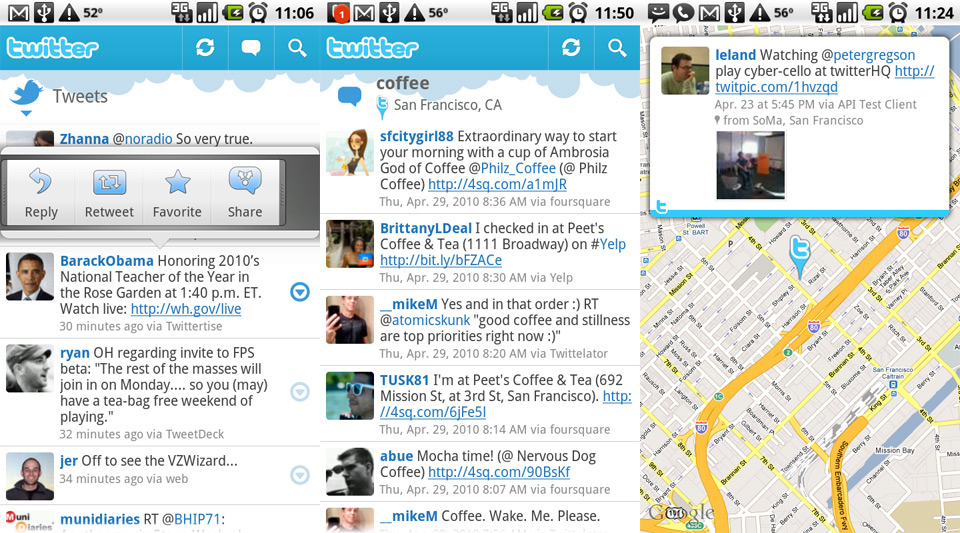The New, Tougher Twitter

Micro-blogging service, Twitter, rocketed from being a niche market to a social networking service used by millions partially due to the abundance of applications that tweet. Unfortunately, the lack of first party or even approved third party twitter apps has led to confusion amongst new users. As a result, the once-unrestrictive company has changed direction by announcing new rules on how applications use the service and by introducing an official app. Developers may feel betrayed, but it’s a consequence that comes with basing an entire business model on another company’s platform.
Twitter made headlines in April when they announced that it would enter the app market. The company had acquired Atebit’s $3 Tweetie application and promised to re-release the app for free as “Twitter” for iPhone. Both users and tech pundits considered Tweetie the best Twitter application for the iPhones and possibly one of the best interfaces to Twitter on any platform. It makes sense why Twitter purchased them. But another surprise came just a few weeks after this announcement when Twitter launched official apps for Android and Blackberry as well.
To make matters worse for developers, on May 24, Twitter announced that it was going to change the way advertising would work in applications. Ads would no longer be allowed to appear embedded within a user’s Twitter stream. This was a major blow to many popular Twitter apps such as Seesmic, Echofon, and Twitterific, as in-stream ads were what kept them afloat. App developers are now being forced to rely on the “Promoted Tweet” advertising model, where Twitter takes a cut. Twitter may also have felt in-stream ads were a user experience issue since new users may confuse ads with tweets. (I’ve issued an updated statement regarding this below.)

Twitter, like any company, needs to make money and beginning to charge users to tweet wouldn’t have played out so well. As a result, Twitter started the “Promoted Tweets” program. This feature allows Twitter to take a share of the income from application usage. Interestingly enough, it is not limited to just the official app, meaning that any Twitter app used will rake in revenues for Twitter.
The official Twitter app hopefully won’t hurt developers too much, since innovative and well implemented features can coerce users to switch apps. The intent was not to harm developers and applications, but just the opposite: to force developers to improve application features, rather than to stagnate. For example, “Twitter” for iPhone is a well polished app that offers more features than Twitter’s official website. To have a competitive edge, popular apps such as Seesmic and TweetDeck have already begun adopting support for multiple social networks, including Facebook. Twitter intends to persuade developers to use their official app as a baseline and to build upon it with a richer feature set.

When asked about their iPhone plans, Twitter Platform team leader Ryan Sarver said that the multitude of apps were “causing mass confusion among user’s who had an iPhone and were looking to use Twitter for the first time.” Twitter’s official iPhone application makes it easier for first time users, who are likely going to search for “Twitter” to find its application in the Apple App Store. The Twitter app market can be divided into two eras – the pre and post “Twitter” for iPhone, Android, and Blackberry eras. Free apps prior to the official app lacked the polish of Tweetie and many of the other top-tier apps. The solution is now clear for most iPhone users: go get the official app for a great experience without ads. Users who want or need a more feature-rich experience can move on to third-party apps.

Twitter has three main goals it wants to accomplish: offer new users a clear and easy option, encourage developers to keep improving their apps, and to create a profitable business model. Although third-party developers who helped build the service may feel betrayed and bitter, Twitter ultimately has to cater to itself and to its users. Twitter hopes to achieve a consistently improved user experience by disposing of the confusing in-app advertising and offering new and current users alike an improved app selection.
Update 6/2/2010: Twitter has since changed its policy from when this article was written. Actual ads may no longer be embedded into the Twitter stream. Only the “Promoted Tweet” advertising model may be used, where Twitter takes a cut. There are exceptions, though — Twitter has stated this ban does not apply to advertising with Tweets or implementing ads outside the stream, so marketers and developers still have options. Twitter simply wants to keep non-tweet content out of a user’s twitter stream because they interrupt a user’s experience and may cause confusion.
Links: Twitter.com (@skattertech)